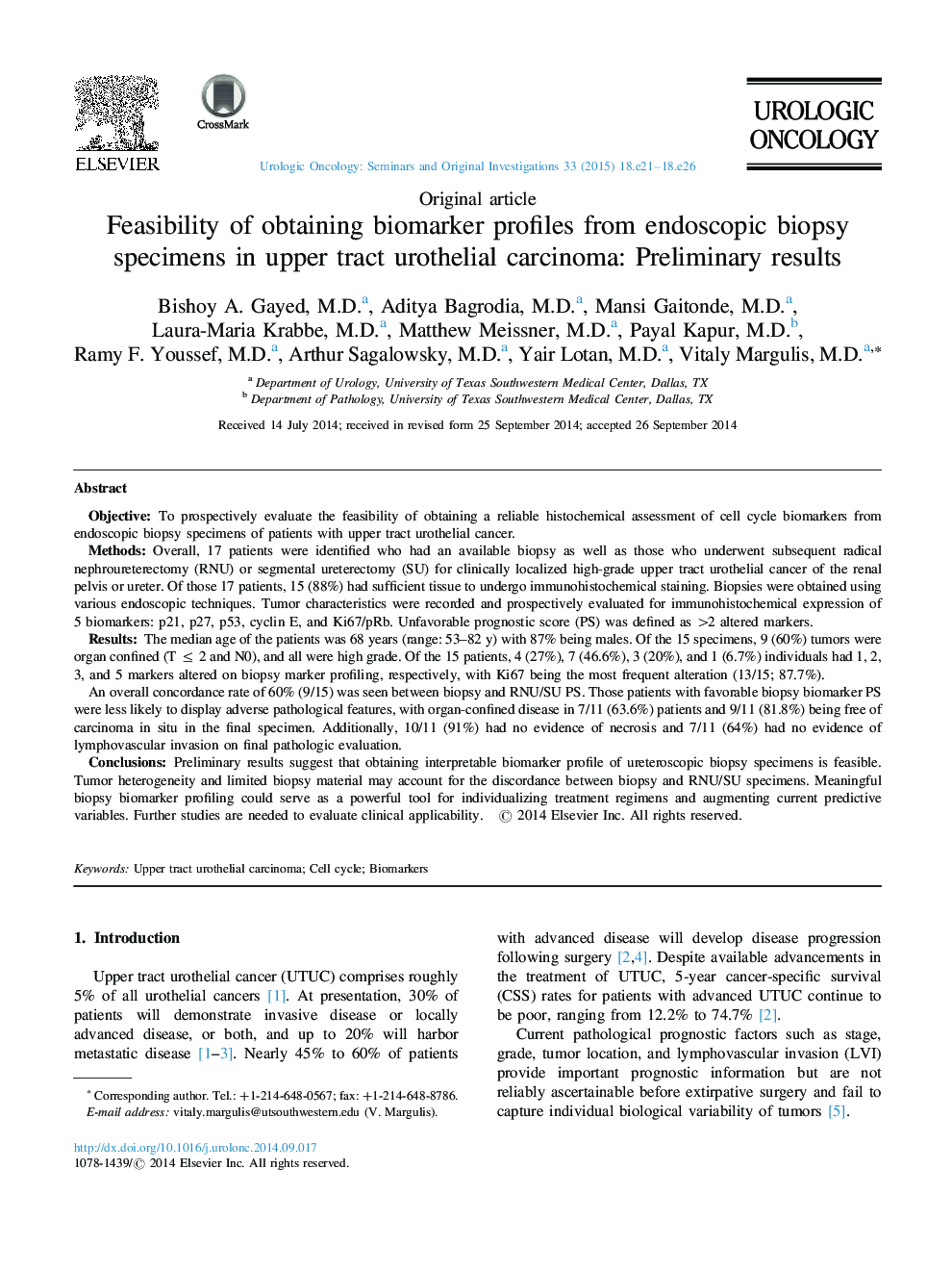| کد مقاله | کد نشریه | سال انتشار | مقاله انگلیسی | نسخه تمام متن |
|---|---|---|---|---|
| 6194218 | 1259356 | 2015 | 6 صفحه PDF | دانلود رایگان |
ObjectiveTo prospectively evaluate the feasibility of obtaining a reliable histochemical assessment of cell cycle biomarkers from endoscopic biopsy specimens of patients with upper tract urothelial cancer.MethodsOverall, 17 patients were identified who had an available biopsy as well as those who underwent subsequent radical nephroureterectomy (RNU) or segmental ureterectomy (SU) for clinically localized high-grade upper tract urothelial cancer of the renal pelvis or ureter. Of those 17 patients, 15 (88%) had sufficient tissue to undergo immunohistochemical staining. Biopsies were obtained using various endoscopic techniques. Tumor characteristics were recorded and prospectively evaluated for immunohistochemical expression of 5 biomarkers: p21, p27, p53, cyclin E, and Ki67/pRb. Unfavorable prognostic score (PS) was defined as>2 altered markers.ResultsThe median age of the patients was 68 years (range: 53-82 y) with 87% being males. Of the 15 specimens, 9 (60%) tumors were organ confined (Tâ¤2 and N0), and all were high grade. Of the 15 patients, 4 (27%), 7 (46.6%), 3 (20%), and 1 (6.7%) individuals had 1, 2, 3, and 5 markers altered on biopsy marker profiling, respectively, with Ki67 being the most frequent alteration (13/15; 87.7%).An overall concordance rate of 60% (9/15) was seen between biopsy and RNU/SU PS. Those patients with favorable biopsy biomarker PS were less likely to display adverse pathological features, with organ-confined disease in 7/11 (63.6%) patients and 9/11 (81.8%) being free of carcinoma in situ in the final specimen. Additionally, 10/11 (91%) had no evidence of necrosis and 7/11 (64%) had no evidence of lymphovascular invasion on final pathologic evaluation.ConclusionsPreliminary results suggest that obtaining interpretable biomarker profile of ureteroscopic biopsy specimens is feasible. Tumor heterogeneity and limited biopsy material may account for the discordance between biopsy and RNU/SU specimens. Meaningful biopsy biomarker profiling could serve as a powerful tool for individualizing treatment regimens and augmenting current predictive variables. Further studies are needed to evaluate clinical applicability.
Journal: Urologic Oncology: Seminars and Original Investigations - Volume 33, Issue 1, January 2015, Pages 18.e21-18.e26
